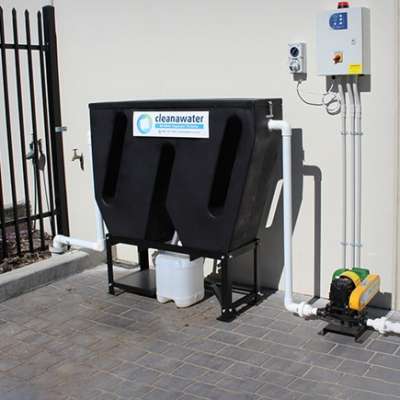These are the most common waste water treatment systems used by Australian industries
The role of waste water treatment systems
Broadly speaking, waste water treatment systems have one purpose—to treat water to a standard where it is fit for a purpose. That purpose may be for recycling, reuse, potting, or discharge into sewerage.
However, what is involved in that treatment process differs greatly depending on the contaminants present. The most suitable waste water treatment systems for each industry depends on the type of waste water produced by that industry, as well as the sort of impurities which appear.
In this article, we will look at the most common contaminants by industry, and which types of systems provide the most popular response. You can also find treatment system product information here.
In brief
| Hydrocyclone oil seperators | Oil water separators | Water recycling systems | Coalescing separator | First flush systems | Filtration systems | |
|---|---|---|---|---|---|---|
| Mining | ✔ | |||||
| Car washes | ✔ | |||||
| Workshops | ✔ | ✔ | ||||
| Service stations | ✔ | ✔ | ||||
| Quarantine facilities | ✔ | |||||
| Transport | ✔ | ✔ |
See below for more details regarding each industry.
For the mining industry

Hydrocyclone oil water separators are a popular choice in mining
The most popular waste water treatment systems for mining are hydrocyclone oil separators.
Mining operations typically have vehicle maintenance facilities for both heavy and light vehicles. Used intensively, these facilities produce a large amount of oily waste water.
This oily waste water is produced when workers wash vehicles prior to maintenance, or when workers wash down workshop floors after servicing has been completed.
Additionally, most mining operations do not have sewer access, so organisations collect waste water in large evaporation ponds. Oils and hydrocarbons must be removed to an acceptable standard so as not to contaminate the evaporation ponds and the local environment.
Hydrocyclone oil seperators are ideal as they can handle the large volumes of waste water which mine sites produce. Required maintenance is generally minimal, and the skid design makes installation and re-deployment straightforward in dynamic mining environments.
For car washes
Popular waste water treatment systems for car washes are water recycling systems.
Car washes are often dependent on potable water from local reserves, which means running costs can fluctuate significantly based on the price and availability of water.
To compensate for this, car washes regularly install water recycling systems which collect, treat and return waste water, so that the water can be used again for primary washing. This can greatly reduce the amount of potable water required, which in turn lowers the business' running costs.
It can also help to keep car washes running during times of local water restrictions and to enhance the business' environmentally friendly image.
For workshops
Oil water separators are a universal piece of equipment for workshops
For similar reasons to the mining operations above, smaller commercial workshops may also require oily water treatment due to the washing of oily vehicles and components.
However, the volume of waste water which workshops produce is often much less than the amount that mining operations produce. This means they can use a coalescing separator.
Coalescing separators are a cost-effective option which are often a requirement of local water authorities. After treatment, the water is ready for discharge at an on-site sewer point.
For service stations
Service stations commonly use a first flush system and a coalescing oil separator as their waste water treatment solution.
This is because service stations often collect rainwater in the forecourt area, rainwater which can be contaminated with hydrocarbons from fuel spillages on the concrete refuelling pad.
The first flush system handles storm water run-off. It sends only 10mm of rain to the coalescing separator for treatment and all subsequent water is discharged to a storm water discharge point.
For quarantine facilities
Waste water treatment systems for quarantine facilities most commonly use the filtration method.
In some cases, the minimum requirement for a quarantine facility is for waste water to be passed through a 100 micron filter just prior to sewer discharge.
However, the treatment requirements for quarantine operations vary depending upon the class of facility and the level of risk which the facility poses to Australia's biosecurity.
Ultimately, whichever waste water treatment systems are chosen, some level of filtration will be required.
For transport
The transport industry typically uses vehicle wash facilities to clean and maintain fleets of trucks and other commercial vehicles.
These facilities can use a high volume of potable water and can mean considerable running costs for businesses, which is why water recycling systems are popular.
Water recycling systems condition the waste water from the wash operations and allow it to be re-used on the bay, thereby reducing water usage and running costs.
Waste water treatment systems in these instances are often tailored to suit particular needs. They can include first flush components, high pressure wash guns, detergent injection, hot water burners and more.
About the author
At Cleanawater, we are your Australian specialists in the design, manufacture and installation of waste water treatment systems for industry and business.
We tailor systems to meet exact requirements and budgets, so operations get systems which are right for their situation and local water authority guidelines, whatever they may be.
Must Read
VapourGard: Your ultimate odour control solution
Control odours effectively and safely with CleanaWater's VapourGard system. Ideal for industries such as mining, landfill operations, recycling, and more, the VapourGard system uses lightweight partic ...
Read moreControl Odour with VapourGard
Control odours effectively and safely with CleanaWater's VapourGard system. Ideal for industries such as mining, landfill operations, recycling, and more, the VapourGard system uses lightweight partic ...
Read more
